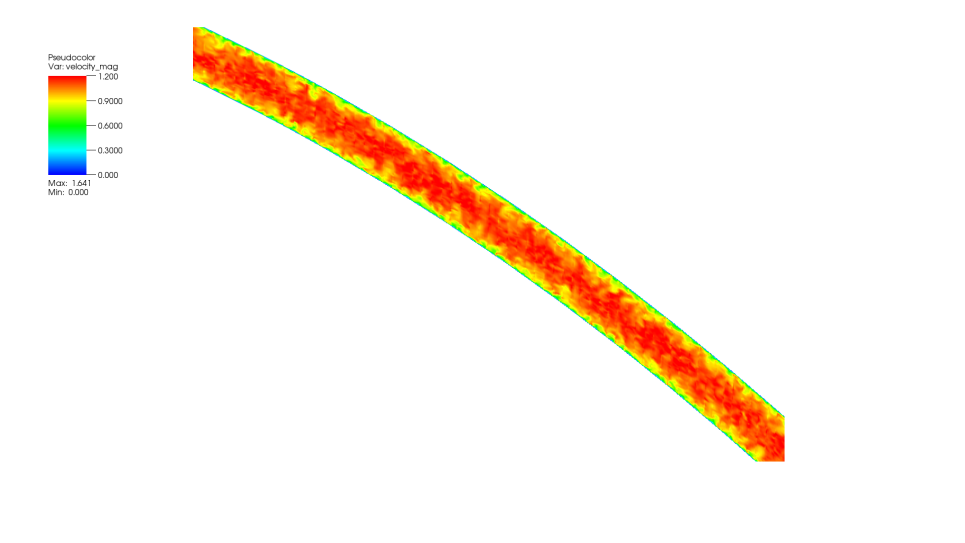
DNS simulation on flow behavior in involute research reactor.
To advance the design of low enriched uranium fuel elements for future nuclear reactors, researchers are performing high-fidelity simulations of turbulent flows to provide improved engineering predictions and thus more accurate thermal hydraulic safety analysis.
The Materials Management and Minimization (M3) Reactor Conversion Program of the National Nuclear Security Administration (NNSA) is supporting the conversion of the research reactor from Highly Enriched Uranium (HEU, 235U / U ≥ wt. 20%) fuel to Low Enriched Uranium (LEU, 235U / U < wt. 20% ) fuel. Better understanding of flow behavior and heat transfer mechanisms in these coolant channels is of great interest and importance for the design of LEU fuel elements. As is well known, many of the most-widely used RANS approaches has exposed the limitations on the prediction of these turbulent flows. Due to the lack of relevant experimental data, it is difficult to quantify the uncertainty introduced by these turbulence models. By performing high fidelity simulation (LES and DNS), the behavior of turbulent flows involves fewer modeling assumptions and can thus potentially provide more reliable means for engineering predictions and thus provide more accurate thermal hydraulic safety analysis. Moreover, the database from the high fidelity simulation can be used to exam or improve the coefficients used in these system codes, such as RELAP5 and PLTEMP/ANL, which have been applied for reactor fuel conversion for a long time.
The proposed project consists of two parts. The first one focuses on using LES to reproduce the flow behavior and collect the turbulent statistics in an involute coolant channel for high Reynolds number. The Reynolds number in the research reactor can range from 50,000 to 100,000. Performing LES simulation with higher Reynolds number is of high importance to investigate the impact of the Reynolds number on the flow and heat transfer mechanism in involute plate research reactor. The second portion of the work focuses on using Large Eddy Simulation to provide benchmark for the highly simplified involute coolant channel. Hundreds of RANS simulations with all kinds of turbulence models have been performed with different commercial codes, such as STAR-CCM+, COMSOL, ANSYS-CFX under the cooperation of three institutions (ANL, ILL, TUM). Discrepancy are found between RANS simulations with different turbulence model, flow condition and codes. The LES results will be used for benchmarking and further investigating the modification of the RANS model. Since the geometry is highly simplified, more LES data are expected for understanding the fundamental mechanism of the flow and heat transfer behavior in an involute plate research reactor.